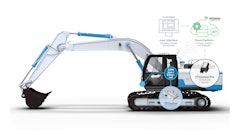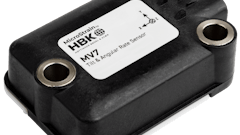Cable ties and other routing and clipping products are not typically the first concern for most equipment designers. But as we are see more electronics and wires on machinery, cable ties and mounts are gaining in popularity as hose, wire and cable management solutions.
Although this is changing, determining wire and hose routing is often the very last step in the design and development process. One compact equipment manufacturer has found that by working with their supplier, HellermannTyton, Milwaukee, WI to address routing issues up front, they have been able to reduce routing and clipping warranty claims by up to 70% in some applications.
Bad vibrations
It was nearly three years ago that the compact equipment manufacturer was having a problem with the rubber-lined metal P-clamps that mounted hydraulic hoses — they were prematurely breaking in the field. Not only was this a warranty issue in and of itself, but in some cases the broken clamp was cutting into the hydraulic hose.
Testing had shown that the metal clamps experienced a tremendous amount of strain in the field. The hydraulic hoses were pulsating rapidly at 4,000 psi, severely impacting the routing and clipping fasteners. Engineers at the OEM thought that perhaps a 500-lb. cable tie might be a suitable replacement for the metal clamps.
When HellermannTyton engineers were called in to look at the project, they suggested a series of 250-lb. cable ties used in conjunction with a high torque, heavy duty mount, that would withstand the high torque forces required to tighten a grade 8 bolt.
And as Marty Best, the district sales manager handling this account for HellermannTyton says, "We were nearly laughed out of the room." Engineers at the OEM had seen the damage done by the severe vibration and could not believe that a series of lighter capacity cable ties would solve the problem. But finally they were convinced to test the HellermannTyton solution.
"A test was devised that would test the 250-lb. cable ties with the heavy duty high torque mount with 4,000 psi pulsating vibrations to see how many cycles this hose management solution would last. The P-clamps were consistently failing around 400,000 to 500,000 cycles," says Best.
After 1.3 million cycles with the cable ties and mounts, the OEM stopped the test. And there was no degradation in the cable ties, the heavy duty mounts or the jacket of the harness itself.
The company decided to switch to this solution in production machines and replaced all the P-clamps with heavy duty high torque mounts at different locations on the hydraulic lines.
Market driven design
The key to this system is the heavy duty mounts which are designed for use with pneumatic impact wrenches. The mount itself is molded with a metal bushing that allows it to be torqued down to 200 ft-lbs or more.
The first version of this type of metal-molded-in-plastic mount was developed in response to another off-highway OEM that required high torque. After extensive testing, the current version — a powdered metal bushing coated with zinc dichromate and then molded into the plastic mount — was developed. It was a version of this mount that HellermannTyton recommended for the compact equipment manufacturer.
"This is the way we develop many of our products," says Gerry Geiger, HellermanTyton's chief designer for the Heavy Equipment Div. "We do not turn away customers requesting a newly designed, low volume product because we often find further market applications requiring the same products."
Extreme temperatures
But short-lived P-clamps were not the only cable management solution that was leading to increased warranty claims at the compact equipment manufacturer. The standard Nylon 6/6 cable ties were also breaking quite often in the field, especially in areas that experienced extreme cold temperatures in the winter months.
By providing a 120-lb. cable tie in an alternative material that has better performance properties in extreme temperatures — both hot and cold — the OEM was able to decrease warranty claims related to cable tie breakage by 66% in the first year the material upgrade was made.
More than ties
HellermannTyton's philosophy toward cable and wire management is a system approach: highly engineered cable tie and mounting solutions, along with increased functionality in materials and products are only part of its approach. Eventually, these cable ties have to be installed — hundreds and hundreds of cable ties day in and day out.
"Repetitive stress disorders are a common complaint of line workers tasked with installing cable ties," says Ron Kovac, HellermannTyton's senior product manager of cable management solutions.
Because of that, and also for improved quality, HellermannTyton has developed a full line of installation tools. They have versions that range from manual and pneumatic "guns" that tension and cut off cable ties to fully automatic pneumatic tools.
"In the fully automatic systems, the cable ties are molded into a strip or bandolier that feed into the tool. Then all the installer does is take the tool, put the jaws around the wire bundle, pull the trigger and the tool brings the tie in, sends it around the wire bundle, pulls it tight and cuts it off in 0.8 seconds with or without a mounting fastener attached," says Ed Dyer vice president of engineering.



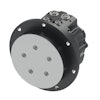
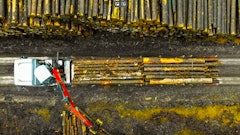

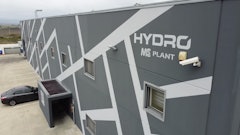

![Hcm Ax Landcros Press Release[32] jpg](https://img.oemoffhighway.com/mindful/acbm/workspaces/default/uploads/2025/11/hcmaxlandcros-press-release32jpg.mAEgsolr89.jpg?ar=16%3A9&auto=format%2Ccompress&fit=crop&h=135&q=70&w=240)




